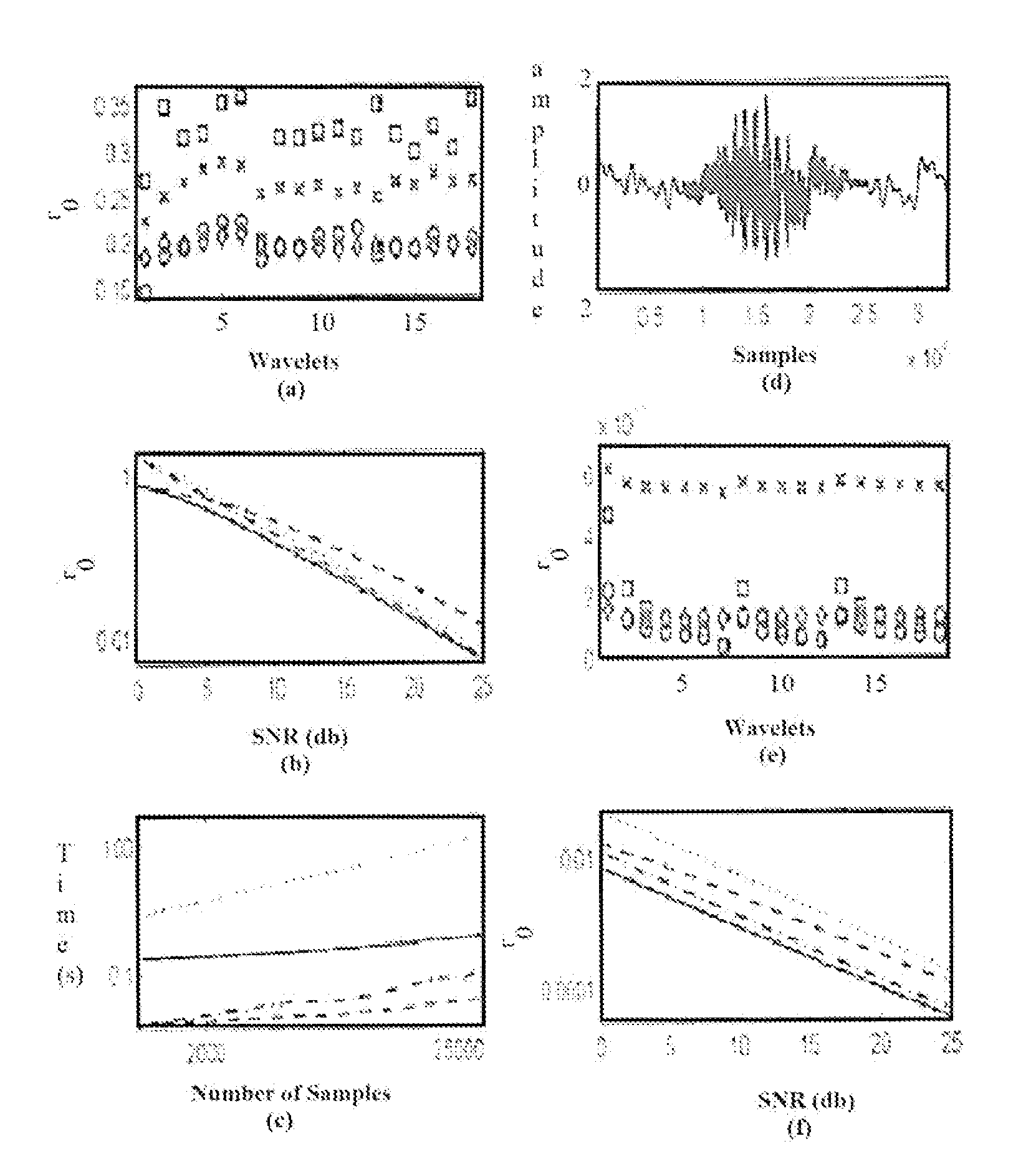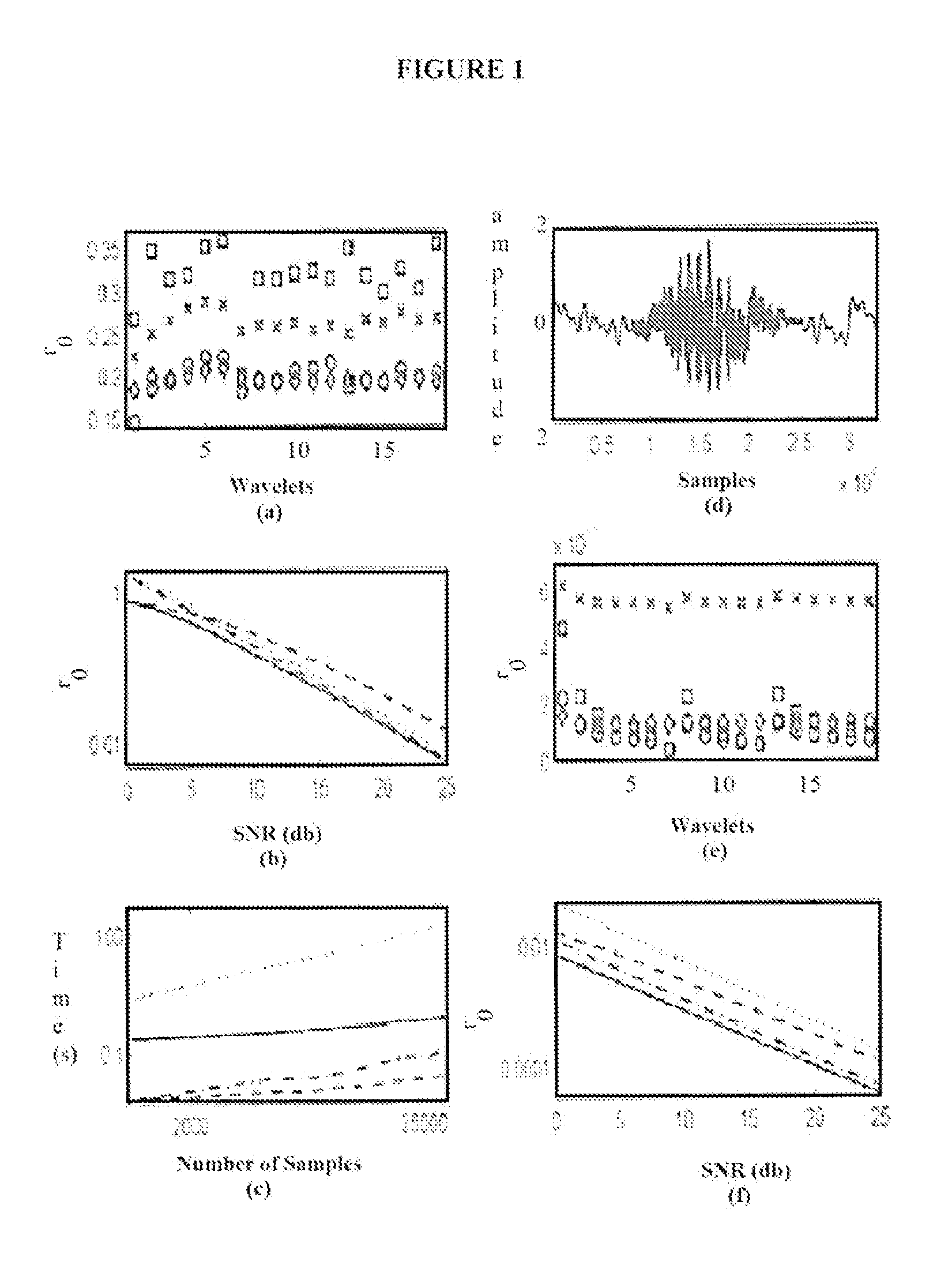Procedure for denoising dual-axis swallowing accelerometry signals
a technology of accelerometry and accelerometer, which is applied in the field of denoising such signals, can solve the problems of high computational complexity, inability to produce signals with optimal thresholds, and inherently noisy measurements, and achieves the effect of low computational complexity and small reconstruction error
- Summary
- Abstract
- Description
- Claims
- Application Information
AI Technical Summary
Benefits of technology
Problems solved by technology
Method used
Image
Examples
Embodiment Construction
Methodology of the Invention
[0010]Consider N noisy discrete-time observations:
x(n)=f(n)+ε(n) (1)
where n=0, . . . , N−1, f(n) is a sampled version of a noiseless continuous signal, and ε(n) is the additive white Gaussian noise drawn from N(0,σε2)
[0011]Assume that f(n) can be expanded using
basis functions.bk(n), on the observation space. BN:
f(n)=Σk=1Nckbk(n) (2)
where
ck=bk(n),f(n) (3)
and (p.q) denotes the inner product of vectors p and q. However, given the noisy observations, the coefficients, ck, can only be approximated as follows:
ĉk=bk(n),x(n)=ck+bk(n),ε(n) (4)
Denoising and Reconstruction Error
[0012]If f(n) can be described with M nonzero coefficients, where Mk, represent samples of a zero mean Gaussian random variable with variance σε2. A classical approach known as wavelet denoising diminishes the effects of noise by first expanding the noisy signal in terms of orthonormal bases of compactly supported wavelets. The estimated coefficients below some threshold, τ, are disregard...
PUM
 Login to View More
Login to View More Abstract
Description
Claims
Application Information
 Login to View More
Login to View More - R&D
- Intellectual Property
- Life Sciences
- Materials
- Tech Scout
- Unparalleled Data Quality
- Higher Quality Content
- 60% Fewer Hallucinations
Browse by: Latest US Patents, China's latest patents, Technical Efficacy Thesaurus, Application Domain, Technology Topic, Popular Technical Reports.
© 2025 PatSnap. All rights reserved.Legal|Privacy policy|Modern Slavery Act Transparency Statement|Sitemap|About US| Contact US: help@patsnap.com



